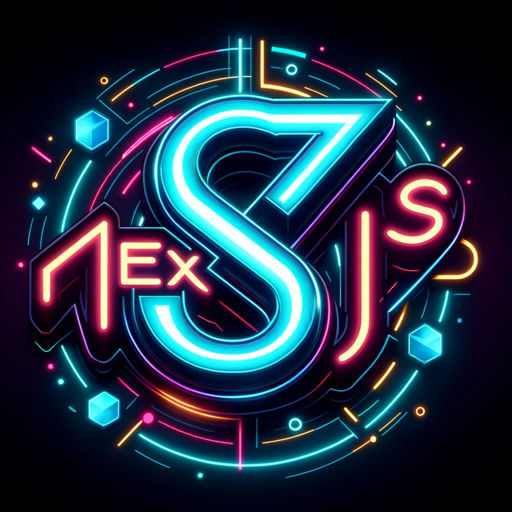NextJs(v14)-dynamic Next.js v14 support.
AI-powered Next.js framework guide.
Create mock data for component
Need Storybook integration?
Mock data setup for UI testing
Direct mock data for component isolation
Related Tools
Load MoreNext JS 14 Expert
GOAT of Next 14

NextJS Expert
Expert in NextJS 13 & 14, writes complete Typescript code, seeks clarification

NextJS
⭐️ 4.2ㆍAdvanced Next.js 14, 13 & 12 Typescript/JS copilot [+ App Router], assistant and project generator with a focus on responsive, beautiful, and scalable UI. Write clean code and become a much faster developer.

GPT / Next.js 14 Coding helper
Expert in OpenAI API and Nextjs 14 programming

NextJS 14 Expert (App Router) Up To Date Knowledge
Expert in Next.js 14 documentation and best practices

Next.js Doc Expert
Next.js 14 specialist for in-depth guidance and clarity.
20.0 / 5 (200 votes)
Introduction to NextJs(v14)
NextJs(v14) is a modern web development framework built on top of React, designed to provide a streamlined and powerful development experience for building high-performance web applications. Its design purpose centers around improving developer productivity while ensuring applications are scalable, performant, and optimized for search engines (SEO). NextJs(v14) combines the flexibility of React with additional features like server-side rendering (SSR), static site generation (SSG), and incremental static regeneration (ISR), making it ideal for a wide range of applications. A key design goal of NextJs(v14) is to simplify complex tasks, such as routing and data fetching, through conventions over configurations, allowing developers to focus more on writing application logic rather than boilerplate code. For example, a developer building an e-commerce site can use NextJs(v14) to pre-render product pages at build time (SSG) for fast load times, while dynamically fetching stock availability in real-time (SSR) to ensure the data is always up-to-date. The framework’s API routes also make it easy to integrate with payment gateways or other third-party services.

Main Functions of NextJs(v14)
Server-Side Rendering (SSR)
Example
Generating HTML content on the server for each incoming request.
Scenario
A news website where content needs to be frequently updated can use SSR to serve fresh articles to users while maintaining fast load times.
Static Site Generation (SSG)
Example
Pre-rendering pages at build time to generate static HTML files.
Scenario
A blog platform can use SSG to generate all blog posts as static pages, ensuring fast delivery to users while reducing server load.
Incremental Static Regeneration (ISR)
Example
Regenerating static pages at runtime without rebuilding the entire site.
Scenario
An e-commerce site with thousands of products can use ISR to update only specific product pages when changes occur, improving build times and ensuring up-to-date content.
Ideal Users of NextJs(v14)
Frontend Developers
Frontend developers who are already familiar with React and looking to build scalable, performant web applications will benefit from NextJs(v14). The framework’s additional features like automatic routing, SSR, and SSG enable these developers to efficiently handle tasks that would otherwise require significant custom setup in a traditional React app.
Digital Marketing Teams
Digital marketing teams focused on SEO and site performance can leverage NextJs(v14) to create web pages that load quickly and rank well in search engines. The built-in support for SSR and SSG ensures that content is optimized for crawlers, while also providing a fast user experience.

How to Use NextJs(v14)
Step 1
Visit aichatonline.org for a free trial without login, and no need for ChatGPT Plus.
Step 2
Ensure you have Node.js and npm installed on your system, as these are prerequisites for working with Next.js. If not, download and install them from the official Node.js website.
Step 3
Set up a new Next.js project by running `npx create-next-app@latest` in your terminal. This command will prompt you to name your project and configure basic settings.
Step 4
Customize your project by adding pages, components, and styles according to your application’s needs. Next.js supports both JavaScript and TypeScript, allowing flexibility in your development.
Step 5
Run the development server using `npm run dev` and start building your application. For an optimal experience, consider integrating linting tools like ESLint, following Airbnb’s style guide to ensure clean and maintainable code.
Try other advanced and practical GPTs
NFT Creator
AI-Powered Creativity for NFTs

Mixology Mastermind for Bars
AI-Powered Cocktail Creativity

Concise Professor
AI-powered precision and clarity in writing.

Concise GPT
Effortlessly Summarize with AI Power

Concise GPT
AI-Powered Brief Responses

Concise
AI-powered concise answers.

Draw Vector Art Creator
AI-Powered Vector Art Creation

Laser Cut Vector Creator for DXF Files V2
AI-powered tool for precise vector designs.

Global Development Advisor
AI-Powered Solutions for Global Development.

Global Payroll and HR Expert
AI-Powered Global Payroll & HR Expert

Automatizatube
AI-Powered Tool for YouTube Content Optimization.

File Analyzer
AI-Powered File Insights at Your Fingertips

- SEO Optimization
- Web Development
- Server-Side
- Static Sites
- React Framework
NextJs(v14) Q&A
What is NextJs(v14) primarily used for?
NextJs(v14) is a React framework that enables developers to build fast and scalable web applications with features like server-side rendering, static site generation, and API routes.
How does NextJs(v14) handle SEO?
NextJs(v14) excels at SEO by offering server-side rendering, which allows content to be fully rendered on the server before being sent to the client, improving page load speed and search engine visibility.
Can I use NextJs(v14) with TypeScript?
Yes, NextJs(v14) has robust support for TypeScript. You can either start a new project with TypeScript or convert an existing JavaScript project by adding a `tsconfig.json` file.
What makes NextJs(v14) different from Create React App?
Unlike Create React App, NextJs(v14) comes with built-in features like server-side rendering, static site generation, and API routes, making it more suitable for production-grade applications.
How does NextJs(v14) improve development workflow?
NextJs(v14) simplifies development with its file-based routing system, built-in CSS and Sass support, and a focus on performance out-of-the-box. It also integrates seamlessly with popular tools like ESLint for linting and Prettier for code formatting.